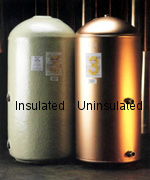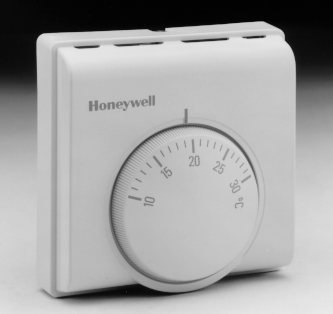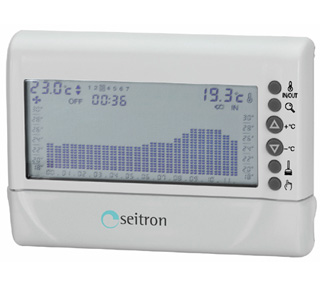Quick Start
Do you have a hot water cylinder in your house/airing cupboard?
 |
If your hot water tank in the airing cupboard does not have insultation on it (bare copper) then you can easily save money. You can buy a jacket to cover the cylinder for between £10 - £20. If you are on gas, you are likely to be paying around 5p for a kilowatt hour (kwh). A kilowatt hour is a measure of energy usage - consuming one kilowatt in 1 hour. If you have a small cylinder of 120 litres, and the water in it is cold (4oC) and you turn on the boiler to heat it to 55oC, you will use 7 kilowatt hours (kWh) to heat the tank. If you boiler is 80% efficienct, it will cost you 7p per kilowatt hour so to heat that tank will cost you nearly 50p. If you use all the water shortly after you have heated it, then it will not have lost much heat however if you wait an hour or dont use all the hot water, then you will be wasting heat and your money. Uninsulated tanks rapidly lose heat. If you heat the tank every day, it will cost you £182 in gas over a year, for a small tank; larger tanks obviously cost more to heat. A jacket for the cylinder should be 80mm thick of insulation and should cut the heat losses by upto 80%. A typical household with a 120 litre tank should save 370 kwh of energy in a year, saving £20 off the gas bill. A large 240 litre tank could save £40 per year. Fitting a jacket to a cylinder is a simple job which can easily be done as a quick DIY task. Even if you have some insulation on your cylinder, a jacket could save you money and pay for itself in one year. Firstly plumbers used to have a tendancy to cut off some insulation off for heat leakage to air clothes in the airing cupboard - this is wasted heat. Secondly foam insulation on older tanks may be thin and not to modern standards, and some foam insulation deteriorates over time so is not as good at insulating when it was first installed. In these cases a jacket will help cut some heat loses and may pay for itself in under a year. |
Does your central heating have a room thermostat?
 |
If you have an old rotary style room thermostat, it can easily be changed to a digital thermostat with a built in clock. These are referred to as chronostats. Rotary thermostats waste heating because they are often left on a high temperature when actually a low temperature will do (you are not in the house) and for some reason people think turning the thermostat all the way round will warm the house up quicker! People often forgot it is on high until someone comments that it's hot in here!
Chronostats are programmable. Some allow different heat settings for weekdays and weekends as well as the normal time of day programming.
|
| To avoid expensive wiring, you need a thermostat that uses batteries or is referred to as volt-free. Some thermostats require their own mains supply which your existing rotary thermostat is unlikely to have. Volt free thermostats dont have this problem and can simply replace your existing thermostat. The price of chronostats varies considerably. It's possible to get a cheap one for £20 or less but you can pay hundreds of pounds for really advanced ones which include facilities to remotely control the heat via telephone. Assuming you pay £ 40 for one, it will probably pay for itself in one year depending on the size of your home and how well insulated your home is. |  |
|
Heat loss from your home is one of the biggest costs and I'll cover in more detail later these losses but first some explanation of heat loss theory. If the temperature outside your house is 0oC and temperature inside is 20oC the heat will try to move towards the cold - over time it will try to equalise. This is important because the hotter the temperature inside compared to outside, the more energy will be lost. If you have a large detached Victorian house, it will have solid walls which have a fairly high loss. With an outside temperature of 0oC and internal temperature of 20oC, each room will be losing about 2kwh. Assuming 3 rooms downstairs and 3 rooms downstairs, it will require 12kw per hour just to maintain the heat at 20oC. If you are heating with gas, this is likely to be costing you 85p per hour. However if you reducce the temperature to 18oC, the energy needed falls to 10kW per hour costing you 70p. Setting you thermostat to 12oC for during the day when you are not there will reduce the energy needed to 7kW, costing you 50p per hour. Assuming you are out of house for 8 hours during these cold days and we get 80 days per year like this, this would save you £84 per year for your £ 40 investment. If you have a modern very well insulated house, the savings will be much less however a large percentage of houses in the UK are of Victorian construction. The saving for a Victorian terrace house is probably around £20 per year. Changing your rotary thermostat is possible as a DIY job. If you have experience on electrics, this will probably take you less than 20 minutes to do it. If you are at all uncertain, ask someone with electrical experience or call in a qualified electrician. Always ensure that the mains electricity supply to your heating is turned off before replacing the thermostat. Check with an electricians screwdriver whether the connections are live before handling wires. Mains electricity can kill. Always follow the safety and installation instructions that come with the thermostat. If your central heating system doesnt have a room thermostat, it will probably benefit from one, even if your radiators are all fitted with thermostatic valves. If the boiler is operated just by a timer, it relies on the internal thermosat in the boiler to decide whether heat is needed. This is not a good way to determine room temperature so what happens is the boiler cycles. This is where it repeatedly turns on for a few minutes, then turns off for a few minutes. Fuel is wasted when the boiler initially turns on so turning on and off is very wasteful. Boilers are much more efficient when they turn on for a long period then turn off for a long period. Adding a chronostat may be a simple job or complex depending on the heating system design. Wireless thermostats are relatively new and avoid the need for new wiring around the house. The controller can be located next to the boiler and the room thermosat installed in a suitable location anywhere in the house. Wireless thermosats cost between £30 and £80 and will provide more savings than replacing an existing rotary thermostat, however it is more likely that you'd have to call in an expert to install which could cost around £100. |